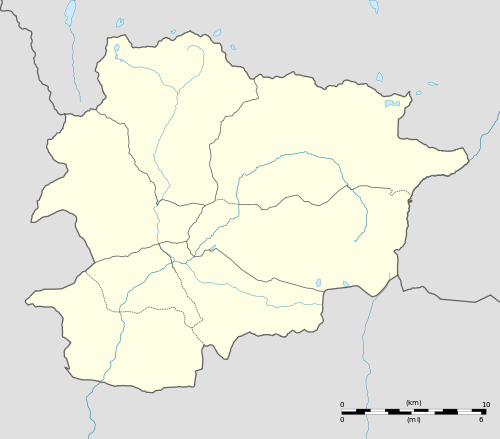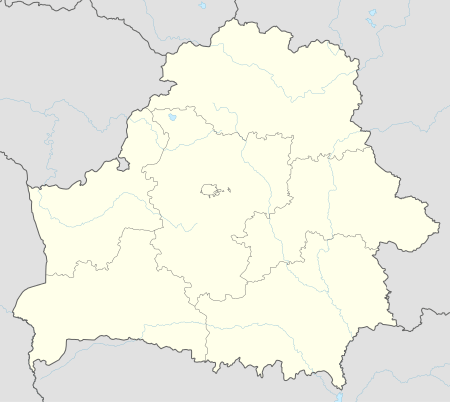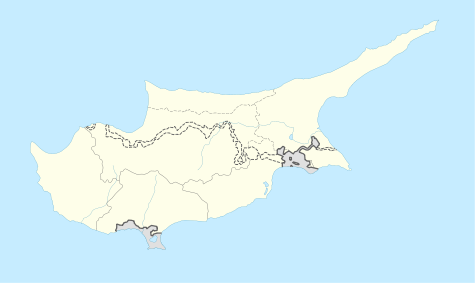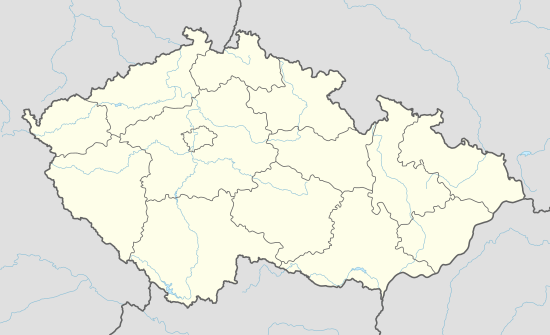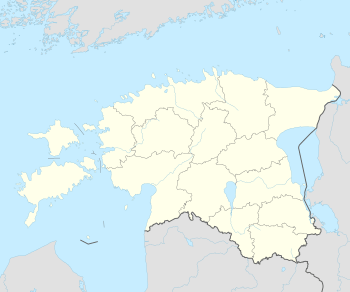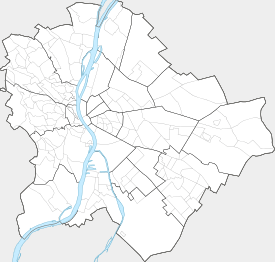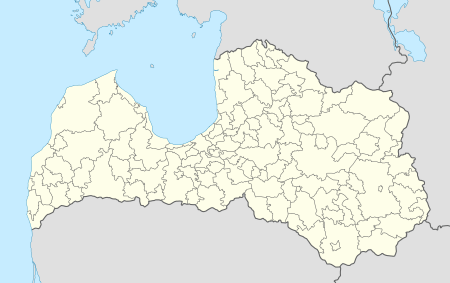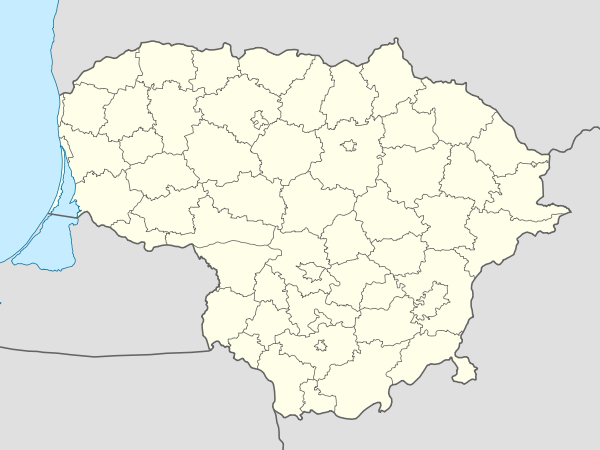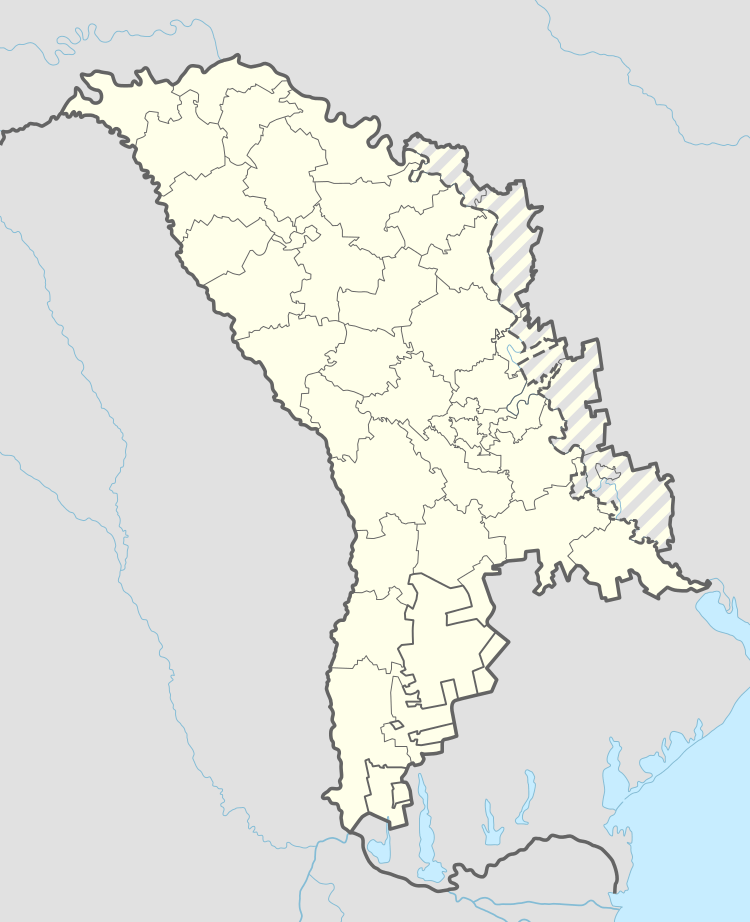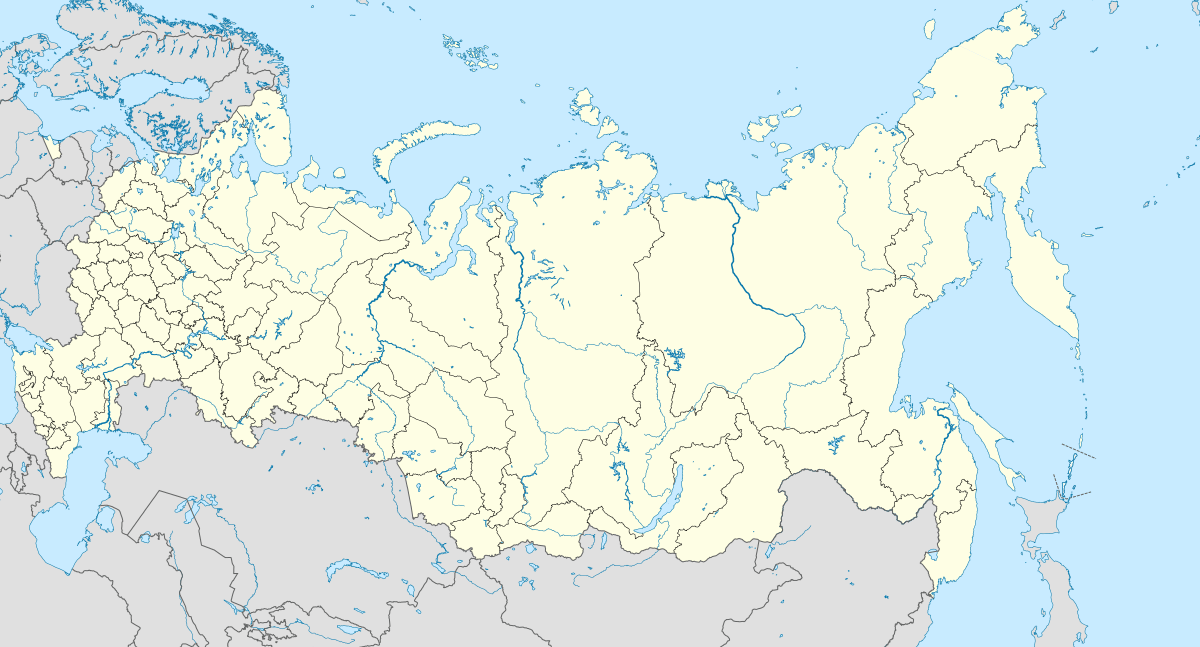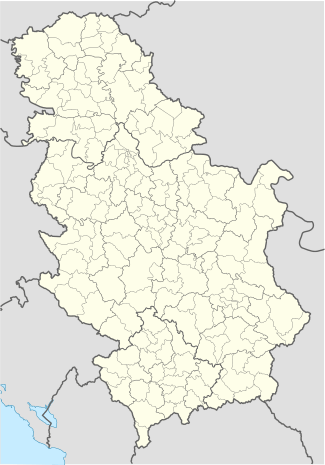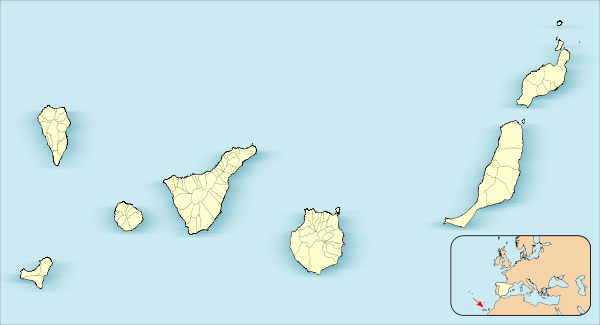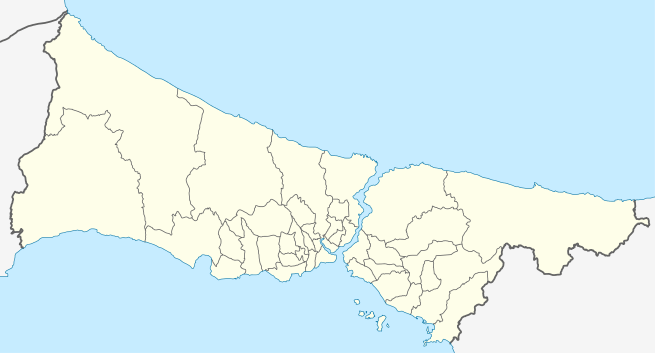List of top-division football clubs in UEFA countries

The Union of European Football Associations (UEFA) is the administrative and controlling body for European football. It consists of 54 member associations, each of which is responsible for governing football in their respective countries.[1]
All widely recognised sovereign states located entirely within Europe are members, with the exceptions of the United Kingdom, Monaco and Vatican City. Eight states partially or entirely outside Europe are also members: Armenia, Azerbaijan, Russia, Georgia, Kazakhstan, Israel, Cyprus and Turkey.[1] The United Kingdom is divided into the four separate football associations of England, Northern Ireland, Scotland, and Wales; each association has a separate UEFA membership. The Faroe Islands, an autonomous country of the Kingdom of Denmark, also has its own football association which is a member of UEFA.[1] The football association of Gibraltar, a British Overseas Territory, was approved as a member by UEFA in 2013.[2] Kosovo was approved as a member in 2016, even though it is claimed by Serbia and is not recognised by several other UEFA member states.
Each UEFA member has its own football league system, except Liechtenstein.[3] Clubs playing in each top-level league compete for the title as the country's club champions. Clubs also compete in the league and national cup competitions for places in the following season's UEFA club competitions, the UEFA Champions League and UEFA Europa League. Due to promotion and relegation, the clubs playing in the top-level league are different every season, except in San Marino where there is only one level.[4]
Some clubs play in a national football league other than their own country's. Where this is the case the club is noted as such.
| Club name | Club finished the previous season as league champions. |
UEFA coefficients
The UEFA league coefficients, also known as the UEFA rankings, are used to rank the leagues of Europe, and thus determine the number of clubs from a league that will participate in UEFA Champions League and UEFA Europa League. A country's ranking determines the number of teams competing in the season after the next; the 2009 rankings determined qualification for European competitions in the 2010–11 season.[5]
A country's ranking is calculated based on the results of its clubs in UEFA competitions over the past five seasons. Two points are awarded for each win by a club, and one for a draw. If a game goes to extra time, the result at the end of time is used to calculate ranking points; if the match goes to a penalty shootout, it is considered to be a draw for the purposes of the coefficient system. The number of points awarded to a country's clubs are added together, and then divided by the number of clubs that participated in European competitions that season. This number is then rounded to three decimal places; two and two-thirds would become 2.667.[5]
For the league coefficient the season's league coefficients for the last five seasons must be added up. In the preliminary rounds of both the Champions League and Europa League, the awarded points are halved. Bonus points for certain achievements are added to the number of points scored in a season. Bonus points are allocated for:
- Qualifying for the Champions League group phase. (4 bonus points)
- Reaching the second round of the Champions League. (5 bonus points)
- Reaching the quarter, semi and final of both Champions League and Europa League. (1 bonus point)[5]
Albania
- Country: Albania
- Football association: Football Association of Albania
- Top-level league: Albanian Superliga (Albanian: Kategoria superiore)
- UEFA ranking: 42nd[6]
- Soccerway profile: here
The top division of Albanian football was formed in 1930, and the inaugural title was won by SK Tirana (now known as KF Tirana). Tirana are the most successful team in the league's history, having won the competition on 24 occasions, followed by KS Dinamo Tirana (now playing in the second division) with 18 championships, and Partizani Tirana with 15.[7] The league became affiliated with UEFA in 1954.[8] Since the 2014–15 season, 10 teams compete in the division. The teams finishing in the bottom two places are relegated to the Albanian First Division and are replaced by the champions of each of that league's two groups.
Clubs and locations as of 2016–17 season:
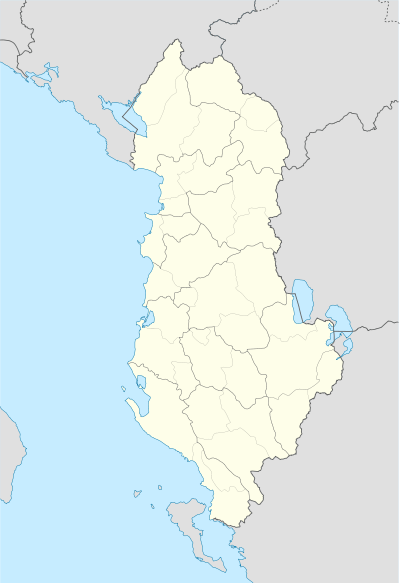
Andorra
- Country: Andorra
- Football association: Andorran Football Federation
- Top-level league: Andorran First Division (Catalan: Primera Divisió)
- UEFA ranking: 53rd[6]
- Soccerway profile: here
Andorra's national league system was formed in 1993, and the Andorran Football Federation gained UEFA membership in 1996.[9] Records from the league's first three seasons are incomplete, but FC Santa Coloma have won more First Division titles than any other team.[10] Another Andorran football club, FC Andorra, play in the Spanish football league system. In recent years, eight teams have competed in the First Division. Each team plays two matches against the other seven clubs. After fourteen games, the league splits into two groups, with teams carrying their previous points totals forward. The top four teams play each other a further two times in the championship round to decide 1st–4th places, while the bottom four teams do likewise in the relegation round, to determine the 5th–8th positions. At the end of the season, the bottom-placed team is relegated, while the seventh-placed team plays a two-legged play-off against the second-placed team in the Second Division to decide which team plays in which division for the following season.
Clubs and locations as of 2016–17 season:
Armenia
- Country: Armenia
- Football association: Football Federation of Armenia
- Top-level league: Armenian Premier League (Armenian: "Բարձրագույն Խումբ")
- UEFA Ranking: 49th[6]
- Soccerway profile: here
Armenia gained independence in 1991, following the break-up of the Soviet Union. Organised football had been played in Armenia since 1936, as part of the Soviet football system. The Football Federation of Armenia gained UEFA affiliation in 1992, and the league ran as the national championship for the first time in the same year.[11][12] Since independence, the country's most successful team are FC Pyunik, who have won ten league titles.[11] As of the 2016-17 season, six teams compete in the Premier League. Each team plays the other six times during the season, and at the end of the ongoing season, the bottom team is relegated to the First League.[13]
Clubs and locations as of 2016–17 season:
| Club | Location |
|---|---|
| Alashkert FC | Yerevan |
| FC Ararat Yerevan | Yerevan |
| FC Banants | Yerevan |
| FC Gandzasar | Kapan |
| FC Pyunik | Yerevan |
| FC Shirak | Gyumri |
Austria
- Country: Austria
- Football association: Austrian Football Association
- Top-level league: Austrian Football Bundesliga (German: Österreichische Fußball-Bundesliga)
- UEFA ranking: 16th[6]
- Soccerway profile: here
Clubs and locations as of 2016–17 season:
Azerbaijan
- Country: Azerbaijan
- Football association: Association of Football Federations of Azerbaijan
- Top-level league: Azerbaijan Premier League (Azerbaijani: Azərbaycan Premyer Liqası)
- UEFA ranking: 32nd[6]
- Soccerway profile: here
Although the country was part of the Soviet Union, the first Azerbaijan-wide football competition took place in 1928, and became an annual occurrence from 1934. Following the break-up of the Soviet Union in 1991, the first independent Azeri championship took place in 1992, and the Association of Football Federations of Azerbaijan gained UEFA affiliation in 1994[14][15] Since independence, the country's most successful team are PFC Neftchi Baku, with eight league titles. In recent years, 10 teams had competed in the Azerbaijan Premier League, but two teams that otherwise would have competed in the 2016–17 season were denied professional licenses, making it an eight-team league at present.
Clubs and locations as of 2016–17 season:
Team in italics is from a zone of the Nagorno-Karabakh conflict and is playing its home games in Baku.
| Club | Location |
|---|---|
| AZAL PFK | Baku |
| Gabala FK | Gabala |
| Kapaz PFK | Ganja |
| Inter Baku PIK | Baku |
| Neftchi Baku PFK | Baku |
| Qarabağ FK | Baku |
| Sumgayit FK | Sumqayit |
| Zira FK | Baku |
Belarus
- Country: Belarus
- Football association: Football Federation of Belarus
- Top-level league: Belarusian Premier League (Belarusian: Вышэйшая ліга)
- UEFA ranking: 22nd[6]
- Soccerway profile: here
Belarus declared independence from the Soviet Union in 1990. Its independence was widely recognised within Europe in 1991, an independent national championship began in 1992, and UEFA membership followed in 1993.[16] Up to the end of the 2016 season, the most successful team is FC BATE, with 13 league championships, including an ongoing streak of 11 titles.[17] The 2016 season saw the league expand from 14 teams to 16, accomplished by promoting three clubs from the Belarusian First League and relegating only the last-place team in the 2015 Premier League. At the end of the season, the bottom two teams are relegated to the First League and replaced by that league's top two finishers.
Clubs and locations as of 2017 season:
Belgium
- Country: Belgium
- Football association: Royal Belgian Football Association
- Top-level league: Belgian First Division A (French: Championnat de Belgique, Dutch: Eerste klasse België, German: Erste Division Belgien)
- UEFA ranking: 10th[6]
- Soccerway profile: here
Organised football reached Belgium in the 19th century; the Royal Belgian Football Association was founded in 1895, and FC Liégeois became the country's first champions the following year. Belgium joined European football's governing body, UEFA, upon its formation in 1954.[18] Historically the country's most successful team are R.S.C. Anderlecht, with 33 league titles as of 2016.[19] The Belgian First Division A, historically known as the First Division and also known as the Pro League from 2008–09 through 2015–16, currently consists of 16 teams. Initially, each team plays the other clubs twice for a total of 30 matches. At this point, the league proceeds as follows (as of the current 2016–17 season):[20]
- The top six teams take half of their points (rounded up) into a championship play-off, playing each other two further times to determine the national champion.
- The teams finishing the regular season between 7th and 15th enter one of two six-team groups. The remaining teams in this competition are the top three teams from the Belgian First Division B (historically known as the Second Division), excluding that division's champion (which earns automatic promotion to First Division A). Each team plays the other five teams in its group home and away, and the winners of each group play one another in a two-legged play-off. The winner of that match advances to a two-legged play-off against the fourth- or fifth-place team (depending on results) from the championship play-off for the country's final UEFA Europa League place for the following season.
- The bottom team on the regular-season table is automatically relegated to First Division B.
Clubs and locations as of 2016–17 season:

Bosnia and Herzegovina
- Country: Bosnia and Herzegovina
- Football association: Football Association of Bosnia and Herzegovina
- Top-level league: Premier League of Bosnia and Herzegovina (Bosnian: Premijer liga Bosne i Hercegovine)
- UEFA ranking: 35th[6]
- Soccerway profile: here
Prior to gaining independence from Yugoslavia, clubs from Bosnia and Herzegovina were eligible to compete in the Yugoslav First League, which they won three times. The country gained independence in 1992, and its Football Association gained UEFA membership in 1998.[21] Due to political tensions between Bosniaks, Bosnian Serbs and Bosnian Croats, the country did not have a single national top division until the 2002–03 season, but rather two or three. Since then, Zrinjski have won four titles, Željezničar have won three, Sarajevo and Široki Brijeg have each won twice, and three other teams have won it once each.[22]
As of the 2016–17 season, the Premier League consists of 12 clubs, reduced from 16 in previous seasons. The 2016–17 season is the first for a two-stage season. In the first stage, each team plays all others home and away, after which the league splits into two six-team groups that also play home and away. The top six teams play for the championship and European qualifying places; the bottom six play to avoid relegation. At the end of the second stage, the bottom two clubs of the relegation group drop to either the First League of Bosnia and Herzegovina or the First League of the Republika Srpska.[23]
Clubs and locations as of 2016–17 season:
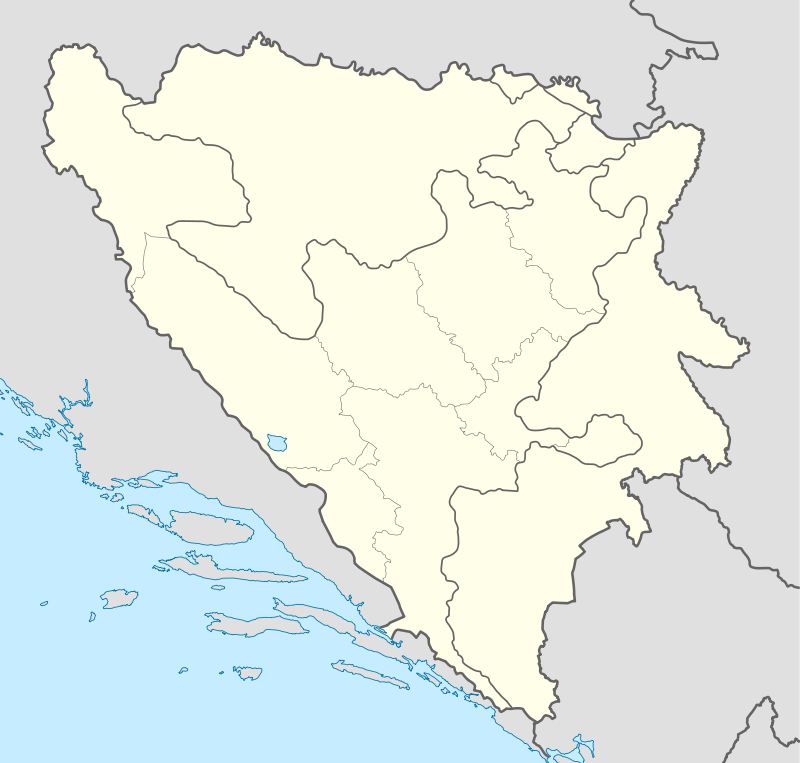
Bulgaria
- Country: Bulgaria
- Football association: Bulgarian Football Union
- Top-level league: First Professional Football League (Bulgarian: Първа професионална футболна лига); short form "Parva Liga" (Първа лига)
- UEFA ranking: 25th[6]
- Soccerway profile: here
A national Bulgarian championship has been held in every year since 1924, although the 1924, 1927 and 1944 seasons were not completed. The country gained UEFA membership in 1954.[24] Historically, the most successful teams in Bulgarian football have been PFC CSKA Sofia and PFC Levski Sofia; no other team has won more than seven league titles.[25] The most recently completed 2015–16 season was intended to have 12 teams, but was reduced to 10 after four clubs (the two clubs that would otherwise have been promoted to what was then known as the A Group, plus two from the previous season's A Group) were denied professional licenses. Following that season, the Bulgarian Football Union revamped the country's professional league structure, expanding the top flight to 14 teams and changing that league's name from "A Group" to "First League".
Under the new structure that begins in 2016–17, each team plays the others twice, once at each club's stadium. At the end of the season the league splits into separate playoffs, with table points and statistics carrying over in full. The top six teams enter a championship playoff, with each team playing the others home and away. The top finisher is league champion and enters the UEFA Champions League; the second-place team earns a place in the UEFA Europa League; and the third-place team (or fourth-place team, should the winner of that season's Bulgarian Cup finish in the top three) advances to a playoff for the country's final Europa League place. The bottom eight split into two four-team groups, playing home and away within each group. The top two teams from each group enter a knockout playoff consisting of two-legged matches (note, however, that if one of these four teams is the Bulgarian Cup winner, it is withdrawn from the playoff and its opponent receives a bye into the final). The winner of this playoff then plays the third-place team in a one-off match for the final Europa League place. The bottom two clubs from each group enter an identical knockout playoff. The winner remains in the First League; the other three teams face a series of relegation playoffs that also include the second- and third-place clubs from the Second League, with places for only two of these five teams in the next season's First League.[26]
Clubs and locations as of 2016–17 season:

Croatia
- Country: Croatia
- Football association: Croatian Football Federation
- Top-level league: Croatian First Football League (Croatian: Prva hrvatska nogometna liga)
- UEFA ranking: 20th[6]
- Soccerway profile: here
National Croatian leagues were organised in 1914 and during the Second World War, but during peacetime Croatia's biggest clubs competed in the Yugoslav First League. After Croatia declared independence from Yugoslavia in 1991, a national football league was formed in 1992, and the Croatian Football Federation gained UEFA membership in 1993.[27] Since its formation, the Croatian First League has been dominated by NK Dinamo Zagreb and HNK Hajduk Split; as of the end of the 2015–16 season, one of these teams has won the title in all but one of the league's 25 seasons.[28] Since the 2013–14 season, the First League has consisted of 10 teams. At the end of the season, the 10th-placed team is relegated directly to the second division, while the 9th-placed team enters a relegation play-off.
Clubs and locations as of 2016–17 season:

Cyprus
- Country: Cyprus
- Football association: Cyprus Football Association
- Top-level league: Cypriot First Division (Greek: Πρωτάθλημα Α' Κατηγορίας, Turkish: Kıbrıs Birinci Ligi)
- UEFA ranking: 18th[6]
- Soccerway profile: here
Clubs and locations as of 2016–17 season:
Czech Republic
- Country: Czech Republic
- Football association: Football Association of the Czech Republic
- Top-level league: Czech First League (Czech: 1. česká fotbalová liga)
- UEFA ranking: 14th[6]
- Soccerway profile: here
Clubs and locations as of 2016–17 season:
Denmark
- Country: Denmark
- Football association: Danish Football Association
- Top-level league: Danish Superliga (Danish: Superligaen)
- UEFA ranking: 22nd[6]
- Soccerway profile: here
Clubs and locations as of 2016–17 season:

England
- Country: England
- Football association: The Football Association
- Top-level league: Premier League
- UEFA ranking: 2nd[6]
- Soccerway profile: here
Founded in 1888, the Football League was the world's first national football league.[29] The inaugural competition was won by Preston North End, who remained unbeaten throughout the entire season. It was the top level football league in England from its foundation until 1992, when the 22 clubs comprising the First Division resigned from the Football League to form the new FA Premier League.[29] As of the 2014–15 season the Premier League comprises 20 clubs;[30] each team plays every other team twice, with the bottom 3 clubs at the end of the season relegated to the Football League Championship. The most successful club is Manchester United, who have won the league 20 times.[31]
Clubs and locations as of 2016–17 season:
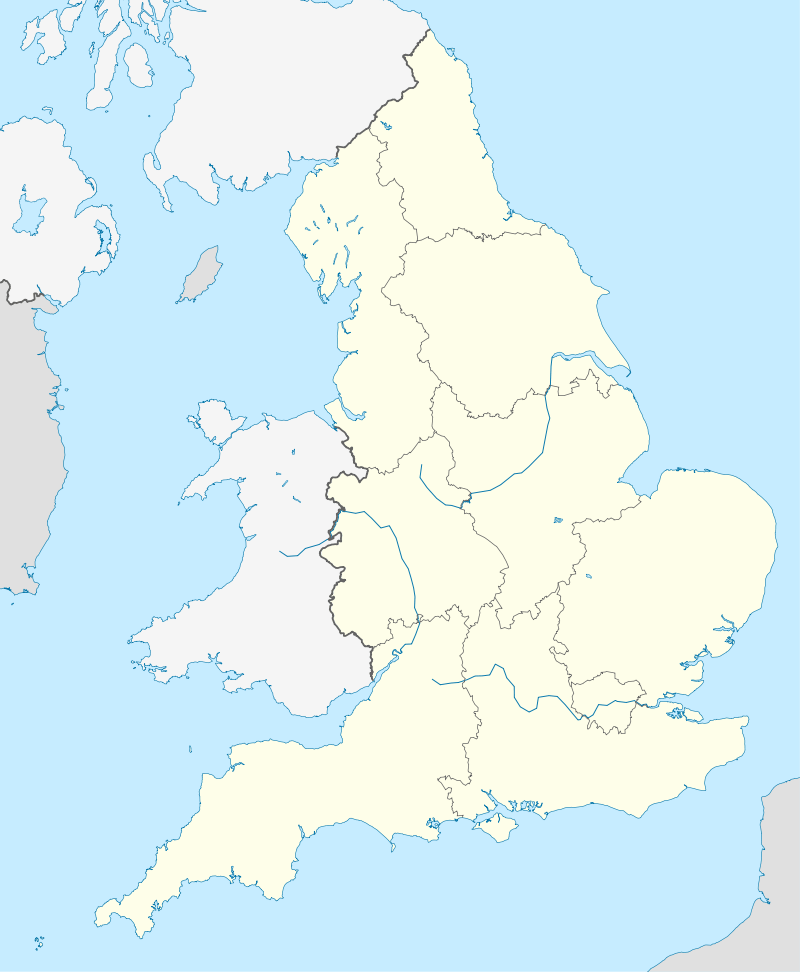
Estonia
- Country: Estonia
- Football association: Estonian Football Association
- Top-level league: Estonian Premier Division (Estonian: Meistriliiga)
- UEFA ranking: 50th[6]
- Soccerway profile: here
An independent Estonian league took place between 1921 and 1940. However, after the Second World War it became part of the Soviet Union, and became a regional system. Estonia regained independence after the dissolution of the USSR, organising the first national championship in 52 years in 1992, the same year that the Estonian Football Association joined UEFA.[32][33] FC Flora Tallinn is the most successful team in the modern era, with 10 league titles as of the end of the 2016 season.[32] Since 2005, the Premier Division has consisted of 10 teams, which play one another four times. At the end of the season the bottom team is relegated to the second level of Estonian football, while the ninth-placed team enters into a relegation playoff.[34]
Clubs and locations as of 2017 season:
| Club | Location | Stadium | Capacity |
|---|---|---|---|
| FC Flora Tallinn | Tallinn | A. Le Coq Arena | 9,692 |
| FC Infonet | Tallinn | Lasnamäe KJH Stadium | 400 |
| FC Levadia Tallinn | Tallinn | Kadriorg Stadium | 5,000 |
| JK Sillamäe Kalev | Sillamäe | Sillamäe Kalevi Stadium | 800 |
| Nõmme Kalju FC | Tallinn | Hiiu Stadium | 300 |
| Paide Linnameeskond | Paide | Paide linnastaadion | 268 |
| Pärnu Linnameeskond | Pärnu | Pärnu Raeküla Stadium | 550 |
| Tartu JK Tammeka | Tartu | Tamme Stadium | 1,750 |
| JK Narva Trans | Narva | Kreenholm Stadium | 1,065 |
| Viljandi JK Tulevik | Viljandi | Viljandi linnastaadion | 1,006 |
Faroe Islands
- Country: Faroe Islands
- Football association: Faroe Islands Football Association
- Top-level league: Faroe Islands Premier League (Faroese: Effodeildin)
- UEFA ranking: 51st[6]
- Soccerway profile: here
The Faroe Islands are a constituent country of the Kingdom of Denmark, which also comprises Greenland and Denmark itself. The league was formed in 1942, and has been contested annually since, with the exception of 1944 due to a lack of available balls.[35] The Faroe Islands gained UEFA recognition in 1992.[36] The most successful teams are Havnar Bóltfelag and KÍ Klaksvík, with 22 and 17 Premier League titles respectively as of the most recently completed 2016 season. Since the 1988 season, the Premier League has consisted of 10 teams.[37] They play each other three times, with the bottom two teams relegated to the First Division.
Clubs and locations as of 2017 season:
Finland
- Country: Finland
- Football association: Football Association of Finland
- Top-level league: Finnish Premier League (Finnish: Veikkausliiga, Swedish: Tipsligan)
- UEFA ranking: 36th[6]
- Soccerway profile: here
Finland's current league has been contested annually since 1898, with the exceptions of 1914 and 1943.[38] The most successful team are HJK Helsinki with 22 titles; as of 2010, no other team has won 10 or more. However, between 1920 and 1948 a rival championship operated, organised by the Finnish Workers' Sports Federation. Frequent champions in that competition before it came under the jurisdiction of the Football Association of Finland included Kullervo Helsinki, Vesa Helsinki and Tampereen Pallo-Veikot.[39] The Premier League consists of 12 teams, which play one another three times each for a total of 33 matches. At the end of the season the bottom club is relegated to the First Division.
Clubs and locations as of 2017 season:
France
- Country: France
- Football association: French Football Federation
- Top-level league: Ligue 1 (French: Ligue 1/Le Championnat)
- UEFA ranking: 6th[6]
- Soccerway profile: here
France's first football team—Le Havre AC—formed in 1872. The first French championship was first held in 1894, but only featured teams from the capital, Paris. Between 1896 and 1912, national championships were organised by several competing federations; the first universally recognised national championship took place in the 1912–13 season. However, it only lasted two seasons; from the outbreak of the First World War in 1914, French football operated on a regional basis until 1932. A national league resumed between 1932 and 1939, and has operated annually since the conclusion of the Second World War in 1945.[40] Ligue 1 and its predecessors have featured 20 teams since the 1946–47 season. Each team plays the other nineteen sides home and away, and at the end of the season the bottom three teams are relegated to Ligue 2.[41] So far, Olympique de Marseille are the only French club to have won the UEFA Champions League, in 1993.
Clubs and locations as of 2016–17 season:
Georgia
- Country: Georgia
- Football association: Georgian Football Federation
- Top-level league: Georgian Premier League (Georgian: უმაღლესი ლიგა; Umaglesi Liga, literally "Higher League")
- UEFA ranking: 33rd[6]
- Soccerway profile: here
A Georgian football championship first took place in 1926, as part of the Soviet football system. The first independent championship took place in 1990, despite the fact that Georgia remained a Soviet state until 1991. Upon independence, Georgia subsequently joined UEFA and FIFA in 1992.[42]
Prior to 2016, the league operated with an autumn-to-spring season spanning two calendar years. The league is currently transitioning to a spring-to-autumn season contained entirely within a calendar year; to that effect, an abbreviated 2016 season is being held in autumn, with the transition to be completed for the 2017 season. Before the transition, 16 teams had competed in the top flight, but the league was reduced to 14 teams for the 2016 season, and will be reduced further to 10 for 2017 and beyond.
Clubs and locations as of 2016 season:

Germany
- Country: Germany
- Football association: German Football Association
- Top-level league: Bundesliga (German: Fußball-Bundesliga)
- UEFA ranking: 3rd[6]
- Soccerway profile: here
The Bundesliga consists of 18 teams, who play each other twice, for a total of 34 matches. The teams finishing in 17th and 18th places are relegated directly to the 2. Bundesliga, while the team finishing in 16th place enters into a two-legged play-off with the team finishing 3rd in the lower division.
Clubs and locations as of 2016–17 season:
Gibraltar
- Country: Gibraltar
- Football association: Gibraltar Football Association
- Top-level league: Gibraltar Premier Division
- UEFA ranking: N/A[43]
- Soccerway profile: here
The Gibraltar Football Association was founded in 1895, making it one of the ten oldest active football associations in the world. League football has been organized by the GFA since 1905. The first league season after Gibraltar were accepted as full members of UEFA was 2013–14, making qualification to the UEFA Champions League and UEFA Europa League possible since the 2014–15 season, provided the relevant club has received a UEFA licence.[2] The Premier Division has consisted of 10 teams since the 2015–16 season. All league matches are held at Victoria Stadium.
Clubs as of 2016–17 season:
| Club |
|---|
| Europa FC |
| Europa Point F.C. |
| Gibraltar United F.C. |
| Glacis United F.C. |
| Lincoln Red Imps F.C. |
| Lions Gibraltar F.C. |
| Lynx F.C. |
| Manchester 62 F.C. |
| Mons Calpe S.C. |
| St Joseph's F.C. |
Greece
- Country: Greece
- Football association: Hellenic Football Federation
- Top-level league: Superleague Greece (Greek: Σούπερ Λίγκα Ελλάδα)
- UEFA ranking: 12th[6]
- Soccerway profile: here
Clubs and locations as of 2016–17 season:

Hungary
- Country: Hungary
- Football association: Hungarian Football Federation
- Top-level league: Hungarian National Championship (Hungarian: Nemzeti Bajnokság I)
- UEFA ranking: 31st[6]
- Soccerway profile: here
Clubs and locations as of 2016–17 season:
Iceland
- Country: Iceland
- Football association: Football Association of Iceland (Icelandic: Knattspyrnusamband Íslands)
- Top-level league: Icelandic Premier Division (Icelandic: Úrvalsdeild)
- UEFA ranking: 37th[6]
- Soccerway profile: here
Clubs and locations as of 2017 season:

Israel
- Country: Israel
- Football association: Israel Football Association
- Top-level league: Israeli Premier League (Hebrew: ליגת העל)
- UEFA ranking: 17th[6]
- Soccerway profile: here

Clubs and locations as of 2016–17 season:
Italy
- Country: Italy
- Football association: Federazione Italiana Giuoco Calcio
- Top-level league: Serie A (Series A)
- UEFA ranking: 4th[6]
- Soccerway profile: here
Clubs and locations as of 2016–17 season:
Kazakhstan
- Country: Kazakhstan
- Football association: Football Union of Kazakhstan
- Top-level league: Kazakhstan Premier League (Kazakh: Қазақстан Кәсіпқой Футбол Лигасы, literally "Kazakhstan Professional Football League")
- UEFA ranking: 34th[6]
- Soccerway profile: here
Clubs and locations as of 2017 season:
Kosovo
- Country: Kosovo
- Football association: Football Federation of Kosovo
- Top-level league: Kosovo Superliga (Albanian: Superliga e Kosovës)
- UEFA ranking: none
- Soccerway profile: here
Clubs and locations as of 2016–17 season:
Latvia
- Country: Latvia
- Football association: Latvian Football Federation
- Top-level league: Latvian Higher League (Latvian: Virslīga)
- UEFA ranking: 38th[6]
- Soccerway profile: here
Clubs and locations as of 2017 season:
| Club | Location | Stadium | Capicity |
|---|---|---|---|
| SK Babīte | Piņķi | Piņķu stadions | 1,000 |
| FK Jelgava | Jelgava | Zemgales Olimpiskais Sporta Centrs | 1,560 |
| FK Liepāja | Liepaja | Daugava Stadium | 5,000 |
| FS Metta/LU | Riga | Stadions Arkādija | 500 |
| Riga FC | Riga | Skonto Stadium | 9,500 |
| FK Rīgas Futbola skola | Riga | Stadions Arkādija | 500 |
| FK Spartaks Jūrmala | Jūrmala | Slokas Stadium | 2,500 |
| FK Ventspils | Ventspils | Ventspils Olimpiskais Stadions | 3,200 |
Lithuania
- Country: Lithuania
- Football association: Lithuanian Football Federation
- Top-level league: A League (Lithuanian: A Lyga)
- UEFA ranking: 41st[6]
- Soccerway profile: here
Clubs and locations as of 2017 season:
Luxembourg
- Country: Luxembourg
- Football association: Luxembourg Football Federation
- Top-level league: Luxembourg National Division (Luxembourgish: Nationaldivisioun French: Division Nationale)
- UEFA ranking: 44th[6]
- Soccerway profile: here
Clubs and locations as of 2016–17 season:

Malta
- Country: Malta
- Football association: Malta Football Association
- Top-level league: Maltese Premier League (Maltese: Il-Premjer)
- UEFA ranking: 45th[6]
- Soccerway profile: here
Clubs and locations as of 2016–17 season:

Moldova
- Country: Republic of Moldova
- Football association: Football Association of Moldova
- Top-level league: Moldovan National Division (Moldovan: Divizia Naţională)
- UEFA ranking: 31st[6]
- Soccerway profile: here
Clubs and locations as of 2016–17 season:
Montenegro
- Country: Montenegro
- Football association: Football Association of Montenegro
- Top-level league: Montenegrin First League (Montenegrin: Prva crnogorska fudbalska liga)
- UEFA ranking: 39th[6]
- Soccerway profile: here
Clubs and locations as of 2016–17 season:
Netherlands
- Country: Netherlands
- Football association: Royal Dutch Football Association
- Top-level league: Eredivisie (Honorary Division)
- UEFA ranking: 8th[6]
- Soccerway profile: here
Clubs and locations as of 2016–17 season:
Northern Ireland
- Country: Northern Ireland
- Football association: Irish Football Association
- Top-level league: NIFL Premiership
- UEFA ranking: 47th[6]
- Soccerway profile: here
Clubs and locations as of 2016–17 season:
- Derry City F.C., a club from Northern Ireland, has competed in the Republic of Ireland's football league system, the League of Ireland, since 1985.
Norway
- Country: Norway
- Football association: Football Association of Norway (NFF)
- Top-level league: Norwegian Premier League (Norwegian: Eliteserien)
- UEFA ranking: 26th[6]
- Soccerway profile: here
Clubs and locations as of 2017 season:

Poland
- Country: Poland
- Football association: Polish Football Association
- Top-level league: Ekstraklasa
- UEFA ranking: 19th[6]
- Soccerway profile: here
Clubs and locations as of 2016–17 season:
Portugal
- Country: Portugal
- Football association: Portuguese Football Federation
- Top-level league: Primeira Liga (English: Premier League)
- UEFA ranking: 5th[6]
- Soccerway profile: here
Clubs and locations as of 2016–17 season:

Republic of Ireland
- Country: Republic of Ireland
- Football association: Football Association of Ireland
- Top-level league: League of Ireland Premier Division (Irish: Príomhroinn Sraith na hÉireann)
- UEFA ranking: 43rd[6]
- Soccerway profile: here
Clubs and locations as of 2017 season:
Republic of Macedonia
- Country: Republic of Macedonia
- Football association: Football Federation of Macedonia
- Top-level league: Macedonian First Football League (Macedonian: Прва македонска Фудбалска Лига)
- UEFA ranking: 42nd[6]
- Soccerway profile: here
Clubs and locations as of 2016–17 season:

Romania
- Country: Romania
- Football association: Romanian Football Federation
- Top-level league: Liga I
- UEFA ranking: 15th[6]
- Soccerway profile: here
Clubs and locations as of 2016–17 season:

Russia
- Country: Russia
- Football association: Football Union of Russia
- Top-level league: Russian Football Premier League (Russian: Российская футбольная премьер-лига)
- UEFA ranking: 7th[6]
- Soccerway profile: here
Clubs and locations as of 2016–17 season:
San Marino
- Country: San Marino
- Football association: San Marino Football Federation
- League: Sammarinese Football Championship (Italian: Campionato Sammarinese di Calcio)
- UEFA ranking: 52nd[6]
- Soccerway profile: here
This is a complete list of football clubs in San Marino (as San Marino has only one level domestic amateur league), apart from San Marino Calcio, the only professional Sammarinese club, which as of 2016–17 competes in Serie D, the fourth level of the Italian football league system.
Clubs and locations as of 2016–17 season:[44]
.jpg)
Scotland
- Country: Scotland
- Football association: Scottish Football Association
- Top-level league: Scottish Premiership (Scots: Scots Premiership)
- UEFA ranking: 23rd[6]
- Soccerway profile: here
Clubs and locations as of 2016–17 season:

Serbia
- Country: Serbia
- Football association: Football Association of Serbia
- Top-level league: Serbian SuperLiga (Serbian: Суперлига Србије)
- UEFA ranking: 27th[6]
- Soccerway profile: here
Clubs and locations as of 2016–17 season:
Slovakia
- Country: Slovakia
- Football association: Slovak Football Association
- Top-level league: Slovak Super Liga (Slovak: Fortuna Liga)
- UEFA ranking: 30th[6]
- Soccerway profile: here
Clubs and locations as of 2016–17 season:

Slovenia
- Country: Slovenia
- Football association: Football Association of Slovenia
- Top-level league: Slovenian PrvaLiga (Slovene: Prva Slovenska nogometna liga, literally "First Slovenian Football League")
- UEFA ranking: 29th[6]
- Soccerway profile: here
Clubs and locations as of 2016–17 season:
Spain
- Country: Spain
- Football association: Royal Spanish Football Federation
- Top-level league: La Liga
- UEFA ranking: 1st[6]
- Soccerway profile: here
Clubs and locations as of 2016–17 season:

Sweden
- Country: Sweden
- Football association: Swedish Football Association
- Top-level league: Allsvenskan (The All-Swedish)
- UEFA ranking: 24th[6]
- Soccerway profile: here
A Swedish championship was first organised in 1896, and the champions were decided by a knockout cup format until 1925, when Allsvenskan was formed.[45] Sweden was one of the founding members of UEFA in 1954.[46] As of the most recently completed 2016 season, Malmö FF have won the most national titles with 19, followed by IFK Göteborg with 18 and IFK Norrköping with 13. Malmö also have the most league titles, with 22 to 13 for both IFK Götebörg and IFK Norrköping. Since 2008,[47] 16 teams compete in Allsvenskan. They each play one another home and away, for a total of 30 games. The bottom two teams are relegated to the Superettan (The Super One), and the 14th-placed Allsvenskan team enters into a relegation playoff with the 3rd-placed Superettan team to decide which will play in Allsvenskan for the following season.[48]
Clubs and locations as of 2017 season:
Switzerland
- Country: Switzerland
- Football association: Swiss Football Association
- Top-level league: Swiss Super League (German: Schweizer Fussballmeisterschaft)
- UEFA ranking: 11th[6]
- Soccerway profile: here
Clubs and locations as of 2016–17 season:
| Club | Location |
|---|---|
| FC Basel | Basel |
| Grasshopper Club Zürich | Zurich |
| FC Lausanne-Sport | Lausanne |
| FC Lugano | Lugano |
| FC Luzern | Lucerne |
| FC Sion | Sion |
| FC St. Gallen | St. Gallen |
| FC Thun | Thun |
| FC Vaduz | Vaduz, Liechtenstein |
| BSC Young Boys | Bern |
Turkey
- Country: Turkey
- Football association: Turkish Football Federation
- Top-level league: Süper Lig (English: Super League)
- UEFA ranking: 12th[6]
- Soccerway profile: here
Turkish football operated on a regional basis until the 1950s. A national knockout tournament took place in 1957 and 1958, to decide European qualification. The Turkish Football Federation retrospectively recognised these tournaments as deciding the Turkish champions; both competitions were won by Beşiktaş J.K.[49] A national league was formed in 1959, and has been held annually from then onwards.[49] Since the formation of a national league, the most successful teams are Galatasaray and Fenerbahçe, with 20 and 19 league titles respectively as of the most recently completed 2015–16 season. Currently, 18 teams compete in the Süper Lig. Each team plays the other teams home and away, with the bottom three teams relegated to the TFF First League for the following season.[50]
Clubs and locations as of 2016–17 season:

| Team | Home city | Stadium | Capacity |
|---|---|---|---|
| Adanaspor | Adana | KozArena | 36,117 |
| Akhisar Belediyespor | Manisa | Manisa 19 Mayıs Stadium | 16,597 |
| Alanyaspor | Antalya | Alanya Oba Stadium | 15,000 |
| Antalyaspor | Antalya | New Antalya Stadium | 33,032 |
| Beşiktaş | İstanbul | Vodafone Arena | 41,903 |
| Bursaspor | Bursa | Timsah Arena | 45,000 |
| Çaykur Rizespor | Rize | Yeni Rize Şehir Stadı | 15,485 |
| Fenerbahçe | İstanbul | Şükrü Saracoğlu Stadium | 50,509 |
| Galatasaray | İstanbul | Türk Telekom Arena | 52,652 |
| Gaziantepspor | Gaziantep | Kamil Ocak Stadium | 16,981 |
| Gençlerbirliği | Ankara | Ankara 19 Mayıs Stadium | 19,209 |
| İstanbul Başakşehir | İstanbul | Başakşehir Arena | 17,800 |
| Karabükspor | Karabük | Dr. Necmettin Şeyhoğlu Stadium | 14,200 |
| Kasımpaşa | İstanbul | Recep Tayyip Erdoğan Stadium | 14,234 |
| Kayserispor | Kayseri | Kadir Has Stadium | 32,864 |
| Torku Konyaspor | Konya | Torku Arena | 42,276 |
| Osmanlıspor | Ankara | Yenikent Asaş Stadium | 20,000 |
| Trabzonspor | Trabzon | Hüseyin Avni Aker Stadium | 24,169 |
Ukraine
- Country: Ukraine
- Football association: Football Federation of Ukraine
- Top-level league: Ukrainian Premier League (Ukrainian: Прем'єр-ліга)
- UEFA ranking: 8th[51]
- Soccerway profile: here
As a member of the Soviet Union, Ukraine's league operated as a feeder to the national Soviet leagues, meaning that until 1992 the strongest Ukrainian teams did not take part.[52] The Football Federation of Ukraine was formed shortly after the country achieved independence in 1991, and gained UEFA membership the following year.[53] Since the formation of a national league, FC Dynamo Kyiv have won 15 titles, FC Shakhtar Donetsk nine, and SC Tavriya Simferopol one, as of the most recently completed 2015–16 season.[52]
Through the 2013–14 season, 16 teams participated in the Premier League. However, during that season's winter break, the Euromaidan protests began, soon followed by Russia's annexation of the Crimean peninsula and the still-ongoing war in the country's east. These developments led to the league dropping to 14 teams in 2014–15 and 12 in 2016–17.
Beginning with the 2016–17 season, the league season is divided into two stages. In the first stage, the teams play one another home and away, after which the league splits into two groups, each playing a home-and-away schedule within the group and with table points carrying over intact. The top six teams play to determine the league champion and European qualifying spots, while the bottom six teams play to avoid relegation, with the bottom two at the end of the second stage dropping to the Ukrainian First League.[54][55]
Clubs and locations as of 2016–17 season:
Teams in italics are from a conflict zone of the War in Donbass and are playing their home games in different cities.
Stal plays its games also in Dnipropetrovsk rather than at home.
Wales
- Country: Wales
- Football association: Football Association of Wales
- Top-level league: Welsh Premier League (Welsh: Cynghrair Cymru)
- UEFA ranking: 50th[6]
- Soccerway profile: here
Although Wales joined UEFA in 1954, Welsh football operated on a regional basis until 1992, with no national championship.[56][57] Several Welsh clubs play not in the Welsh football league system, but in the English football league system. Currently, one Welsh club, Swansea City, competes in the Premier League. Another Welsh club, Cardiff City, was relegated to the second level, the Football League Championship, at the end of the 2013–14 season. Four other Welsh clubs participate lower down the English football league system: Newport County A.F.C., Wrexham F.C., Colwyn Bay F.C. and Merthyr Town F.C.. Despite competing in Football Association competitions, the latter four are under the jurisdiction of the Football Association of Wales.[58] Until 2011 Swansea City and Cardiff City had similar arrangements with the FAW but are now under the jurisdiction of The Football Association.[59] The most successful Welsh club since the formation of the Welsh Premier League is The New Saints, with 8 league titles.[57] As of 2014–15, 12 teams compete in the Welsh Premier league. Relegation to and promotion from lower regional leagues is in part dictated by whether or not clubs can obtain a Premier League licence; only clubs able to obtain a licence are eligible for promotion, and clubs which fail to obtain one are relegated regardless of their final league position.[60]
Clubs and locations as of 2016–17 season:
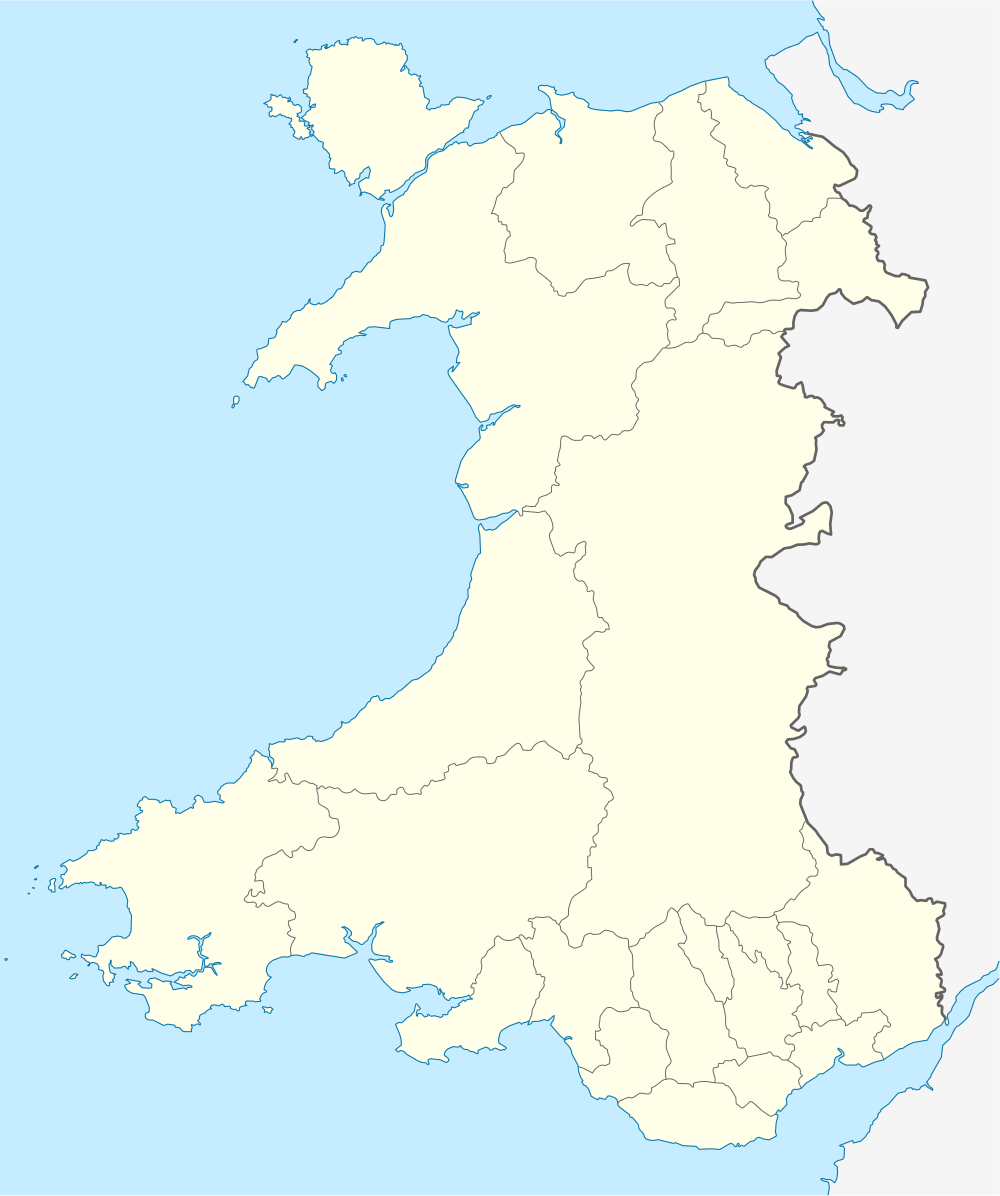
- ↑ In 2003, Total Network Solutions F.C., representing Llansantffraid, merged with Oswestry Town F.C., an English club that had historically played in the Welsh football structure. The merged club, which became The New Saints in 2006, played in Llansantffraid until moving to a ground in Oswestry starting with the 2007–08 season. The two communities are 8 miles/13 km apart.[61]
See also
- List of top-division football clubs in AFC countries
- List of top-division football clubs in CAF countries
- List of top-division football clubs in CONCACAF countries
- List of top-division football clubs in CONMEBOL countries
- List of top-division football clubs in OFC countries
- List of top-division football clubs in non-FIFA countries
References
- 1 2 3 Ornstein, David (8 December 2008). "Big four to feel wind of European change". BBC Sport. Retrieved 18 July 2010.
- 1 2 "Gibraltar named 54th member of UEFA". UEFA. 24 May 2013. Retrieved 18 June 2013.
- ↑ "Liechtenstein making strides". UEFA. 21 February 2010. Retrieved 19 July 2010.
- ↑ "Solid foundations bolster San Marino". UEFA. 21 February 2010. Retrieved 19 July 2010.
- 1 2 3 "Regulations of the UEFA Champions League 2010/11" (PDF). UEFA. pp. 41–48. Retrieved 16 August 2010.
- 1 2 3 4 5 6 7 8 9 10 11 12 13 14 15 16 17 18 19 20 21 22 23 24 25 26 27 28 29 30 31 32 33 34 35 36 37 38 39 40 41 42 43 44 45 46 47 48 49 50 51 2015 rankings are used; these determine qualification for European competitions in the 2016–17 season. Kassies, Bert. "UEFA Country Ranking 2015". Retrieved 27 May 2015.
- ↑ Boesenberg, Eric (19 May 2016). "Albania: List of champions". Rec.Sport.Soccer Statistics Foundation. Retrieved 5 June 2016.
- ↑ "Member associations: Albania". UEFA. Retrieved 9 September 2012.
- ↑ "Member associations: Andorra". UEFA. Retrieved 10 August 2010.
- ↑ CE Principat have three titles, and were runners-up in the 1993–94 season, meaning that they cannot match Santa Coloma's six confirmed league titles. Kramarsic, Igor (31 May 2012). "Andorra: List of champions". Rec.Sport.Soccer Statistics Foundation. Retrieved 9 September 2012.
- 1 2 Manaschev, Erlan; Stokkermans, Karel (26 November 2010). "Armenia: List of champions". Rec.Sport.Soccer Statistics Foundation. Retrieved 24 February 2011.
- ↑ "Member associations: Armenia". UEFA. Retrieved 24 February 2011.
- ↑ "Armenia: Premier League". Soccerway. Global Sports Media. Retrieved 13 September 2012.
- ↑ Manaschev, Erlan; Stokkermans, Karel (25 August 2016). "Azerbaijan: List of champions". Rec.Sport.Soccer Statistics Foundation. Retrieved 24 September 2016.
- ↑ "Member associations: Azerbaijan". UEFA. Retrieved 12 August 2010.
- ↑ "Member associations: Belarus". UEFA. Retrieved 24 February 2011.
- ↑ Shtutin, Yevgeniy (17 October 2016). "Belarus: List of champions". Rec.Sport.Soccer Statistics Foundation. Retrieved 21 November 2016.
- ↑ "Member associations: Belgium". UEFA. Retrieved 16 August 2010.
- ↑ Andries, Marc (19 May 2016). "Belgium: List of champions". Retrieved 22 May 2016.
- ↑ Stokkermans, Karel (3 October 2013). "Belgium 2012/13". Rec.Sport.Soccer Statistics Foundation. Retrieved 15 November 2013.
- ↑ "Member associations: Bosnia-Herzegovina". UEFA. Retrieved 16 August 2010.
- ↑ Kramarsić, Igor; Stojaković, Zoran (28 July 2016). "Bosnia-Herzegovina: List of champions". Retrieved 12 October 2016.
- ↑ Stokkermans, Karel (6 October 2016). "Bosnia-Hercegovina 2016/17". Rec.Sport.Soccer Statistics Foundation. Retrieved 12 October 2016.
- ↑ "Member associations: Bulgaria". UEFA. Retrieved 16 August 2010.
- ↑ Dontchev, Julian (23 July 2015). "Bulgaria: List of champions". Retrieved 2 May 2016.
- ↑ Stokkermans, Karel (14 April 2016). "Bulgaria 2015/16 A grupa". Rec.Sport.Soccer Statistics Foundation. Retrieved 2 May 2016.
- ↑ "Member associations: Croatia". UEFA. Retrieved 17 August 2010.
- ↑ Puric, Bojan; Herceg, Boris & Kramarsic, Igor (6 May 2016). "Croatia: List of champions". Retrieved 17 May 2016.
- 1 2 "History of the Football League". The Football League. 16 June 2010. Retrieved 11 August 2010.
- ↑ "A History of The Premier League". Premier League. Retrieved 11 August 2010.
- ↑ Ross, James M. (14 May 2010). "England – List of champions". Rec.Sport.Soccer Statistics Foundation. Retrieved 11 August 2010.
- 1 2 Petersoo, Indrek (21 November 2016). "Estonia: List of champions". Rec.Sport.Soccer Statistics Foundation. Retrieved 17 November 2016.
- ↑ "Member associations: Estonia". UEFA. Retrieved 31 August 2010.
- ↑ Stokkermans, Karel (14 April 2016). "Estonia 2016". RSSSF. Retrieved 17 May 2016.
- ↑ Heuser, Gerd; Schöggl, Hans (14 April 2016). "Faroe Islands: List of champions". Rec.Sport.Soccer Statistics Foundation. Retrieved 30 May 2016.
- ↑ "Member associations: Faroe Islands". UEFA. Retrieved 2 September 2010.
- ↑ Schaal, Markus (29 January 2009). "Faroe Islands - Final Placings (since 1979)". Rec.Sport.Soccer Statistics Foundation. Retrieved 30 May 2016.
- ↑ Pietarinen, Heikki (7 May 2010). "Finland: List of champions". Rec.Sport.Soccer Statistics Foundation. Retrieved 11 September 2001.
- ↑ Pietarinen, Heikki (21 May 2010). "Finland: TUL champions". Rec.Sport.Soccer Statistics Foundation. Retrieved 11 September 2010.
- ↑ Mazet, François; Pauron, Frédéric (21 May 2010). "France: List of champions". Rec.Sport.Soccer Statistics Foundation. Retrieved 17 September 2010.
- ↑ Polsinelli, Denis (2 June 2010). "France 2009/10". Rec.Sport.Soccer Statistics Foundation. Retrieved 2 August 2010.
- ↑ "Member associations: Georgia". UEFA. Retrieved 25 September 2010.
- ↑ no Gibraltarian clubs competed in Europe in 2013–14 as this was Gibraltar's first season as UEFA member
- ↑ Stokkermans, Karel (26 May 2016). "San Marino 2015/16". Rec.Sport.Soccer Statistics Foundation. Retrieved 29 May 2016.
- ↑ Hedlundh, Kent (27 October 2016). "Sweden: List of champions". Rec.Sport.Soccer Statistics Foundation. Retrieved 21 November 2016.
- ↑ "Member associations: Sweden". UEFA. Retrieved 6 September 2010.
- ↑ Glenning, Clas (28 March 2008). "Sweden 2007". Rec.Sport.Soccer Statistics Foundation. Retrieved 10 June 2014.
NB: 1 club relegated, 3 promoted as Allsvenskan is extended to 16 clubs 2008.
- ↑ Stokkermans, Karel (3 April 2014). "Sweden 2013". Rec.Sport.Soccer Statistics Foundation. Retrieved 10 June 2014.
- 1 2 Kárpáti, Tamás (19 May 2016). "Turkey – List of Champions". Rec.Sport.Soccer Statistics Foundation. Retrieved 29 May 2016.
- ↑ Sivritepe, Erdinç (26 May 2016). "Turkey 2009/10". Rec.Sport.Soccer Statistics Foundation. Retrieved 29 May 2016.
- ↑ 1
- 1 2 Schöggl, Hans; Stokkermans, Karel (21 July 2016). "Ukraine: List of champions". Rec.Sport.Soccer Statistics Foundation. Retrieved 12 October 2016.
- ↑ "Member associations: Ukraine". UEFA. Retrieved 5 September 2010.
- ↑ Fussball, Fedya (6 October 2016). "Ukraine 2016/17". Rec.Sport.Soccer Statistics Foundation. Retrieved 12 October 2016.
- ↑ (Ukrainian) FFU approved changes to the UPL regulations. UA-Football. 29 April 2016
- ↑ "Member associations: Wales". UEFA. Retrieved 3 September 2010.
- 1 2 Schöggl, Hans; Stokkermans, Karel (5 June 2014). "Wales: List of champions". Rec.Sport.Soccer Statistics Foundation. Retrieved 9 June 2014.
- ↑ "Welsh clubs 'could not leave' FAW". BBC Sport. 1 May 2009. Retrieved 3 September 2010.
- ↑ Football Association breaks Welsh jurisdiction over Cardiff and Swansea
- ↑ Stokkermans, Karel (15 November 2013). "Wales 2012/13". Rec.Sport.Soccer Statistics Foundation. Retrieved 29 August 2013.
- ↑ "Club History". The New Saints. Retrieved 20 July 2010.
